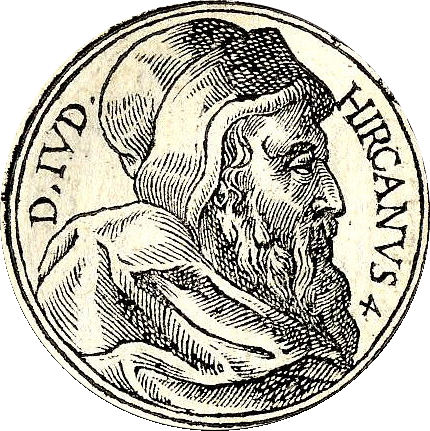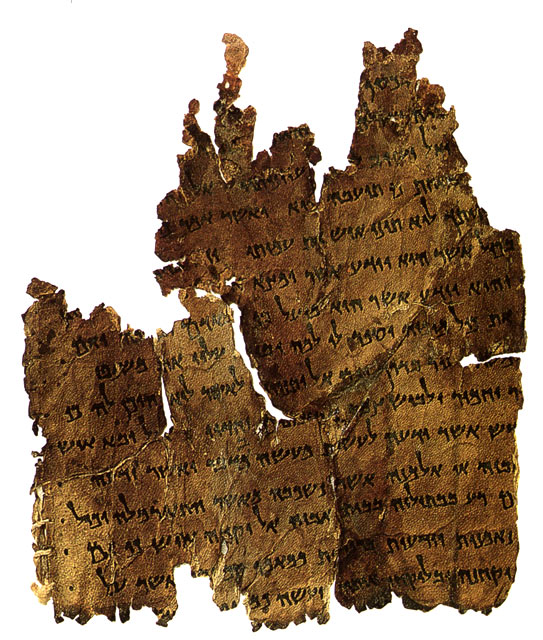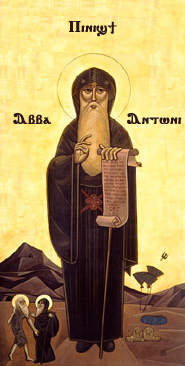|
Essenes
The Essenes (; Hebrew: , ''Isiyim''; Greek: Ἐσσηνοί, Ἐσσαῖοι, or Ὀσσαῖοι, ''Essenoi, Essaioi, Ossaioi'') were a mystic Jewish sect during the Second Temple period that flourished from the 2nd century BCE to the 1st century CE. The Jewish historian Josephus records that Essenes existed in large numbers, thousands lived throughout Roman Judaea. They were fewer in number than the Pharisees and the Sadducees, the other two major sects at the time. The Essenes lived in various cities but congregated in communal life dedicated to voluntary poverty, daily immersion, and asceticism (their priestly class practiced celibacy). Most scholars claim they seceded from the Zadokite priests. The Essenes have gained fame in modern times as a result of the discovery of an extensive group of religious documents known as the Dead Sea Scrolls, which are commonly believed to be the Essenes' library. These documents preserve multiple copies of parts of the Hebrew Bible unt ... [...More Info...] [...Related Items...] OR: [Wikipedia] [Google] [Baidu] |
Mandaeism
Mandaeism ( Classical Mandaic: ࡌࡀࡍࡃࡀࡉࡉࡀ ; Arabic: المندائيّة ), sometimes also known as Nasoraeanism or Sabianism, is a Gnostic, monotheistic and ethnic religion. Its adherents, the Mandaeans, revere Adam, Abel, Seth, Enos, Noah, Shem, Aram, Jesus and especially John the Baptist. Mandaeans consider Adam, Seth, Noah, Shem and John the Baptist prophets with Adam being the founder of the religion and John being the greatest and final prophet. The Mandaeans speak an Eastern Aramaic language known as Mandaic. The name 'Mandaean' comes from the Aramaic '' manda'', meaning knowledge. Within the Middle East, but outside their community, the Mandaeans are more commonly known as the (singular: ), or as Sabians (, ). The term is derived from an Aramaic root related to baptism. The term Sabians derives from the mysterious religious group mentioned three times in the Quran alongside the Jews, the Christians and the Zoroastrians as a ' People of t ... [...More Info...] [...Related Items...] OR: [Wikipedia] [Google] [Baidu] |
Qumran
Qumran ( he, קומראן; ar, خربة قمران ') is an archaeological site in the West Bank managed by Israel's Qumran National Park. It is located on a dry marl plateau about from the northwestern shore of the Dead Sea, near the Israeli settlement and kibbutz of Kalya. The Hellenistic period settlement was constructed during the reign of Hasmonean leader John Hyrcanus () or somewhat later. Qumran was inhabited by a Jewish community of the late Second Temple period, which most scholars identify with the mystic sect of the Essenes; however, other groups were also suggested. It was occupied most of the time until and was destroyed by the Romans during the First Jewish-Roman War, possibly as late as 73 CE. It was later used by Jewish rebels during the Bar Kokhba Revolt. Today, the Qumran site is best known as the settlement nearest to the Qumran Caves where the Dead Sea Scrolls were hidden, caves in the sheer desert cliffs and beneath, in the marl terrace. The ... [...More Info...] [...Related Items...] OR: [Wikipedia] [Google] [Baidu] |
Sadducees
The Sadducees (; he, צְדוּקִים, Ṣədūqīm) were a socio- religious sect of Jewish people who were active in Judea during the Second Temple period, from the second century BCE through the destruction of the Second Temple , Temple in 70 CE. The Sadducees are often compared to other contemporaneous sects, including the Pharisees and the Essenes. Josephus, writing at the end of the 1st century CE, associates the sect with the upper social and economic echelon of Judean society. As a whole, they fulfilled various political, social, and religious roles, including maintaining the Temple in Jerusalem. The group became extinct some time after the destruction of Herod's Temple in Jerusalem in 70 CE. Etymology According to Abraham Geiger, the Sadducee sect of Judaism derived their name (Greek: Saddoukaioi; Hebrew: ṣāddūqim) from that of Zadok, the first High Priest of Israel, High Priest of ancient Israel in the time of Solomon to serve in the First Temple; ... [...More Info...] [...Related Items...] OR: [Wikipedia] [Google] [Baidu] |
Dead Sea Scrolls
The Dead Sea Scrolls (also the Qumran Caves Scrolls) are ancient Jewish and Hebrew religious manuscripts discovered between 1946 and 1956 at the Qumran Caves in what was then Mandatory Palestine, near Ein Feshkha in the West Bank, on the northern shore of the Dead Sea. Dating from the 3rd century BCE to the 1st century CE, the Dead Sea Scrolls are considered to be a keystone in the history of archaeology with great historical, religious, and linguistic significance because they include the oldest surviving manuscripts of entire books later included in the biblical canons, along with deuterocanonical and extra-biblical manuscripts which preserve evidence of the diversity of religious thought in late Second Temple Judaism. At the same time they cast new light on the emergence of Christianity and of Rabbinic Judaism. Most of the scrolls are held by Israel in the Shrine of the Book at the Israel Museum, but their ownership is disputed by Jordan due to the Qumran Caves' hist ... [...More Info...] [...Related Items...] OR: [Wikipedia] [Google] [Baidu] |
Pharisees
The Pharisees (; he, פְּרוּשִׁים, Pərūšīm) were a Jewish social movement and a school of thought in the Levant during the time of Second Temple Judaism. After the destruction of the Second Temple in 70 CE, Pharisaic beliefs became the foundational, liturgical, and ritualistic basis for Rabbinic Judaism. Conflicts between Pharisees and Sadducees took place in the context of much broader and longstanding social and religious conflicts among Jews, made worse by the Roman conquest. One conflict was cultural, between those who favored Hellenization (the Sadducees) and those who resisted it (the Pharisees). Another was juridical-religious, between those who emphasized the importance of the Temple with its rites and services, and those who emphasized the importance of other Mosaic Laws. A specifically religious point of conflict involved different interpretations of the Torah and how to apply it to current Jewish life, with Sadducees recognizing only the Written Tor ... [...More Info...] [...Related Items...] OR: [Wikipedia] [Google] [Baidu] |
Teacher Of Righteousness
The Teacher of Righteousness (in Hebrew: מורה הצדק ''Moreh ha-Tzedek'') is a figure found in some of the Dead Sea Scrolls at Qumran, most prominently in the Damascus Document. This document speaks briefly of the origins of the sect, probably Essenes, 390 years after the reign of Nebuchadnezzar and after 20 years of "groping" blindly for the way. "God... raised for them a Teacher of Righteousness to guide them in the way of His heart". The Teacher is extolled as having proper understanding of the Torah, qualified in its accurate instruction, and being the one through whom God would reveal to the community "the hidden things in which Israel had gone astray". Although the exact identity of the Teacher is unknown, based on the text of the Community Rule scroll, the teachers of the sect are identified as Kohens (priests) of patrilineal progeny of ZadokSerech HaYachad text – Sod H'Megilloth (B.T. Katz) p. 22 (the first high priest to serve in Solomon's Temple), leading sch ... [...More Info...] [...Related Items...] OR: [Wikipedia] [Google] [Baidu] |
Second Temple Period
The Second Temple period in Jewish history lasted approximately 600 years (516 BCE - 70 CE), during which the Second Temple existed. It started with the return to Zion and the construction of the Second Temple, while it ended with the First Jewish–Roman War and the Siege of Jerusalem (70), destruction of Jerusalem in 70 CE. In 587/6 BCE, the Kingdom of Judah was conquered by the Neo-Babylonian Empire. The Judeans lost their independence and monarchy, and Siege of Jerusalem (587 BC), their holy city was destroyed. Part of the Judean population Babylonian captivity, was exiled to Babylon; it was eventually Return to Zion, allowed to return following Edict of Cyrus, a proclamation by the Persian king Cyrus the Great that was issued after the fall of Babylon to the Achaemenid Empire. Under Yehud (Persian province), Persian provincial governance ( 539 – 332 BCE), the returned Jewish population in Judah was allowed to self-govern and rebuild the Temple in Jerusalem. In 332 BCE, Jud ... [...More Info...] [...Related Items...] OR: [Wikipedia] [Google] [Baidu] |
Jewish Religious Movements
Jewish religious movements, sometimes called " denominations", include different groups within Judaism which have developed among Jews from ancient times. Today, the most prominent divisions are between traditionalist Orthodox movements (including Haredi and Religious Zionist () sects); modernist movements such as Conservative, Masorti and Reform Judaism; and secular or Jews. The movements differ in their views on various issues. These issues include the level of observance, the methodology for interpreting and understanding Jewish law, biblical authorship, textual criticism, and the nature or role of the messiah (or messianic age). Across these movements, there are marked differences in liturgy, especially in the language in which services are conducted, with the more traditional movements emphasizing Hebrew. The sharpest theological division occurs between Orthodox and non-Orthodox Jews who adhere to other denominations, such that the non-Orthodox movements are sometimes ref ... [...More Info...] [...Related Items...] OR: [Wikipedia] [Google] [Baidu] |
Asceticism
Asceticism (; from the el, ἄσκησις, áskesis, exercise', 'training) is a lifestyle characterized by abstinence from sensual pleasures, often for the purpose of pursuing spiritual goals. Ascetics may withdraw from the world for their practices or continue to be part of their society, but typically adopt a frugal lifestyle, characterised by the renunciation of material possessions and physical pleasures, and also spend time fasting while concentrating on the practice of religion or reflection upon spiritual matters. Various individuals have also attempted an ascetic lifestyle to free themselves from addictions, some of them particular to modern life, such as money, alcohol, tobacco, drugs, entertainment, sex, food, etc. Asceticism has been historically observed in many religious traditions, including Buddhism, Jainism, Hinduism, Islam, Christianity, Judaism, Stoicism and Pythagoreanism and contemporary practices continue amongst some religious followers. The pra ... [...More Info...] [...Related Items...] OR: [Wikipedia] [Google] [Baidu] |
Predestination
Predestination, in theology, is the doctrine that all events have been willed by God, usually with reference to the eventual fate of the individual soul. Explanations of predestination often seek to address the paradox of free will, whereby God's omniscience seems incompatible with human free will. In this usage, predestination can be regarded as a form of religious determinism; and usually predeterminism, also known as theological determinism. History Pre-Christian period Some have argued that the Book of Enoch contains a deterministic worldview that is combined with dualism. The book of Jubilees seems to harmonize or mix together a doctrine of free will and determinism. Ben Sira affirms free will, where God allows a choice of bad or good before the human and thus they can choose which one to follow. New Testament period There is some disagreement among scholars regarding the views on predestination of first-century AD Judaism, out of which Christianity came. ... [...More Info...] [...Related Items...] OR: [Wikipedia] [Google] [Baidu] |
Celibacy
Celibacy (from Latin ''caelibatus'') is the state of voluntarily being unmarried, sexually abstinent, or both, usually for religious reasons. It is often in association with the role of a religious official or devotee. In its narrow sense, the term ''celibacy'' is applied only to those for whom the unmarried state is the result of a sacred vow, act of renunciation, or religious conviction. In a wider sense, it is commonly understood to only mean abstinence from sexual activity. Celibacy has existed in one form or another throughout history, in virtually all the major religions of the world, and views on it have varied. Classical Hindu culture encouraged asceticism and celibacy in the later stages of life, after one has met one's societal obligations. Jainism, on the other hand, preached complete celibacy even for young monks and considered celibacy to be an essential behavior to attain moksha. Buddhism is similar to Jainism in this respect. There were, however, significa ... [...More Info...] [...Related Items...] OR: [Wikipedia] [Google] [Baidu] |







.jpg)



